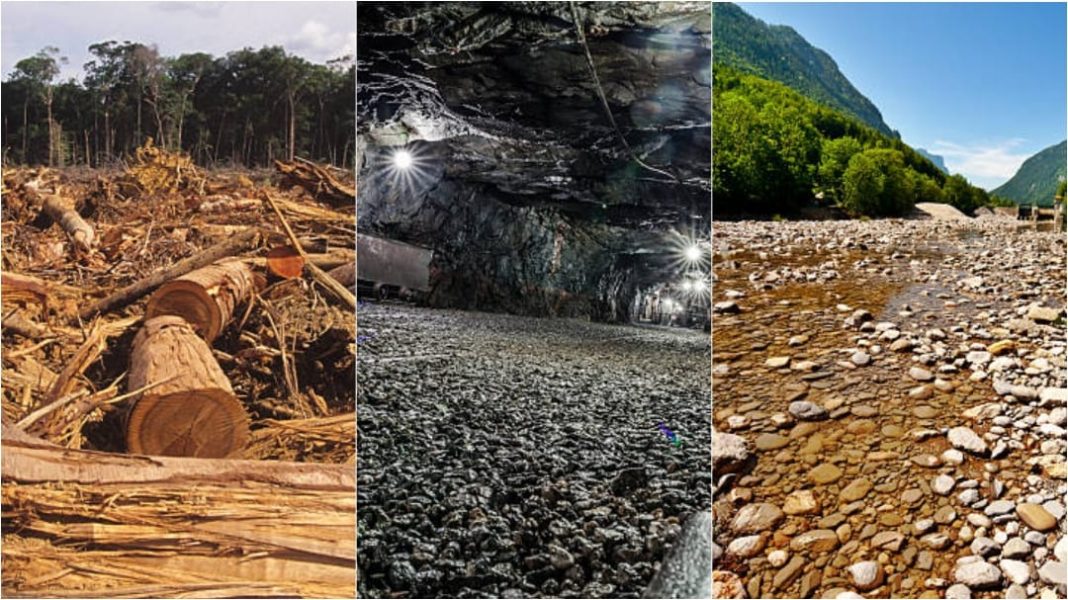By Deepak Singh
Shillong, April 30: Climate Change is real and just because the State of Meghalaya is hilly and has over 75 percent forest cover doesn’t mean that it will be shielded by the dramatic effects of global warming. The Garo Hills, which once boasted of lush green forests and crystal-clear streams, is now a shadow of its former self. Nature’s once-bountiful gifts have been ravaged by rampant deforestation, illegal coal mining, and sand mining. The environmental impact has been catastrophic, with soaring temperatures almost touching 40 degrees and triggering a heatwave, which has never happened in the history of the region. Rainfall is becoming less frequent, adding to the misery of farmers and residents, who are struggling to cope with the devastating effects of the changing climate.
Illegal logging and coal mining have stripped the land of its natural resources, leaving behind a barren wasteland. The once-abundant wildlife and flora are now a distant memory. The ecosystem has been thrown out of balance, with devastating consequences for the people who live here.
At the same time, despite the National Green Tribunal’s ban on coal mining in Meghalaya, illegal mining continues unabated in the Garo Hills and Jaintia Hills, leading to severe ecological damage.
Decreasing forest cover
According to India State of Forest Report (ISFR) 2021, Meghalaya lost 73 sq. km of forest cover in just two years – from 2019 to 2021, which has been attributed to shifting cultivation, felling of trees, natural calamities, anthropogenic pressure and developmental activities.
However, the forest cover in the state has been steadily declining as the ISFR of 2019 had also mentioned that the forest cover in the State has decreased by 27.21 sq km since 2017.
Although Meghalaya still has 76 percent of forest cover, it is to be mentioned here that the overall forest cover of India has increased by 1540 sq km from 2019 to 2021, while Meghalaya continues to see a decline.
Increasing temperatures, erratic rain
Another report indicates that precipitation levels have generally decreased over the majority of months and seasons in Garo Hills, whereas the maximum temperature showed a marked increase. From 1999 onwards, the relative humidity has been on the rise in all seasons except monsoon. The report also notes that the rain’s pattern is becoming more erratic and its coverage scattered.
The region’s climate has been drastically impacted by increased deforestation and carbon dioxide (CO2) emission. Global Forest Watch (2022) has reported a 78% increase in the loss of forest cover and CO2 emissions in the Garo Hills between 2010 and 2020, compared to the previous decade (2001−2010).
Infact on April 18, 2023, Baghmara and Resubelpara recorded maximum temperatures of 37.5 degrees Celsius while Tura recorded a high of 35.4 degrees. Whereas, the maximum temperate of Shillong was 28.9 degrees, the highest single-day temperature for the month of April in the last 10 years.
Water shortage
Another major worry for the region is the lack of drinking water. Destruction of forests and catchments areas has led to water shortage, especially in Tura Town and also in most parts of West Garo Hills. People have to resort to buying water for tankers at high prices, especially during the dry months as the town suffers from lack of water sources.
As per the figures of the PHE department, Tura town needs upwards of 3.1 million gallons of water a day; however, there continues to be a shortfall of about 6 lakh gallons per day.
Livelihood
The local people, who have lived in harmony with nature for generations, are now struggling to survive. The changing climate is affecting their crops, and many are struggling to make ends meet. The once-fertile land is now parched and barren, and the streams and rivers have dried up. The people are facing severe water shortages, and many are forced to travel long distances to fetch water for their daily needs.
The situation in Garo Hills is a stark reminder of the devastating impact of human greed and exploitation on the environment. It is a call to action for all of us to take responsibility for our actions and make a concerted effort to protect the environment before it’s too late.
The way forward
The situation is alarming, and urgent action is needed to save the fragile ecosystem of the Garo Hills. The local authorities and the state government must take immediate steps to control the mining activities and ensure strict enforcement of environmental laws to protect the forests and the livelihoods of the people.
It is time to realize that the exploitation of nature for short-term gains will lead to long-term losses, and we must act before it’s too late.



